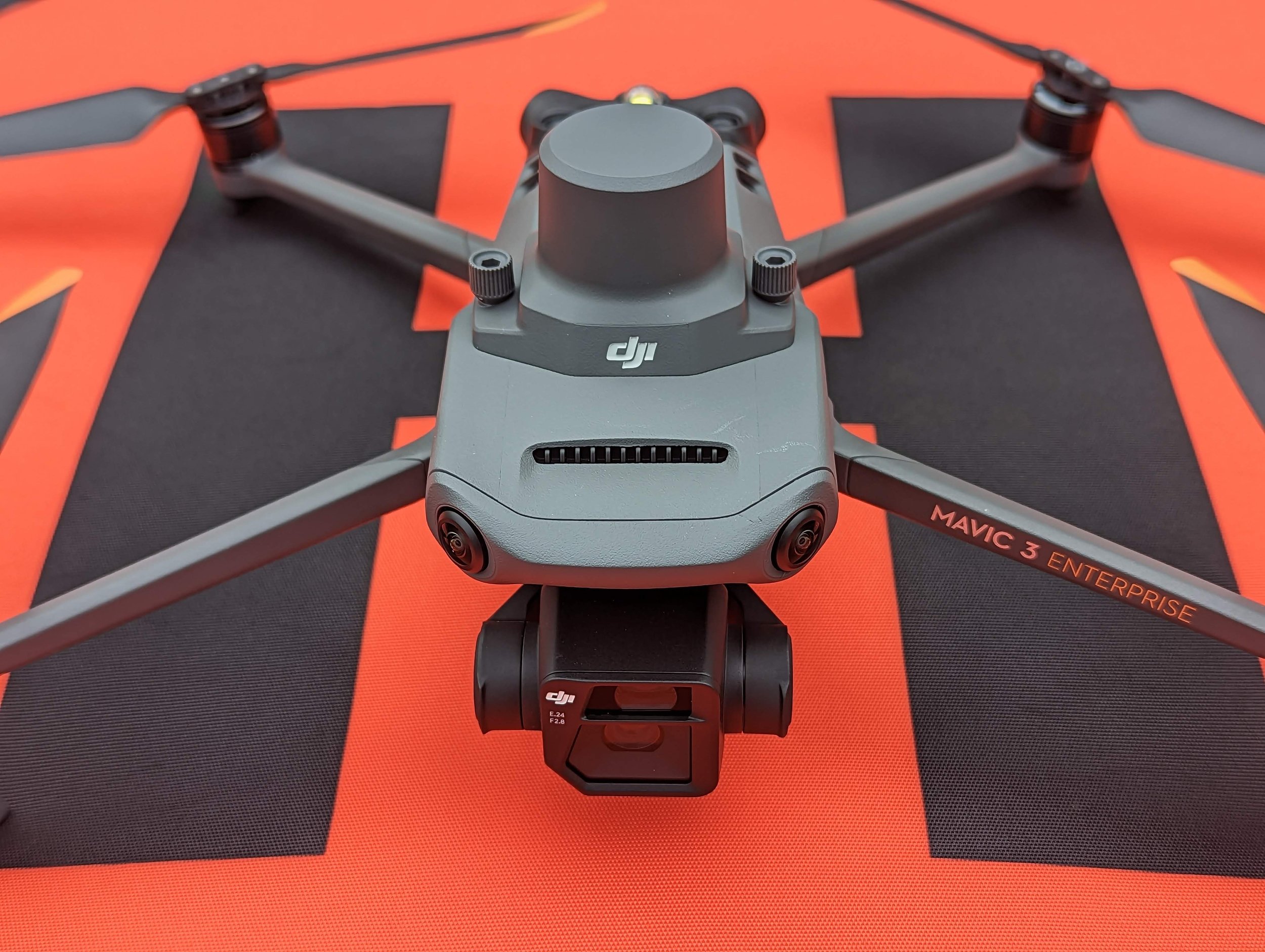How RTK and PPK are Used in Drone Surveys
DJI Mavic 3 Enterprise Drone with RTK Module Attached
Introduction
In recent years, drones have become an indispensable tool for a wide range of industries, including construction, agriculture, environmental monitoring, and surveying. One of the key challenges in drone surveys has been achieving accurate and reliable geolocation data. However, with the advent of Real-Time Kinematic (RTK) and Post-Processed Kinematic (PPK) technologies, the accuracy and efficiency of drone surveys have reached new heights. Megadrone UK, a leading drone service provider, recognises the immense value of RTK and PPK and has made them a standard practice whenever possible. In this blog post, we will explore how RTK and PPK improve the results from drone surveys and why Megadrone UK has embraced these technologies.
Understanding RTK and PPK
Before diving into the benefits, let's briefly explain what RTK and PPK entail:
Real-Time Kinematic (RTK): RTK is a technique that provides real-time, centimetre-level positioning accuracy by utilising a network of base stations and a rover unit attached to the drone. The base stations receive signals from Global Navigation Satellite Systems (GNSS) and provide corrections to the rover unit in real-time, enabling precise positioning.
Post-Processed Kinematic (PPK): PPK is a similar technique to RTK but with a slight difference in workflow. In PPK, the GNSS data collected during the drone flight is post-processed after the survey using a base station or virtual reference station. This allows for centimetre-level accuracy by accounting for the time-delayed corrections applied during post-processing.
Enhanced Accuracy and Precision
The primary advantage of employing RTK and PPK in drone surveys is the significantly improved accuracy and precision of the collected geolocation data. Traditional GPS receivers on drones often suffer from errors caused by atmospheric conditions, satellite signal interference, and multipath effects. However, RTK and PPK techniques mitigate these issues through real-time or post-processing corrections, resulting in sub-centimetre-level accuracy. This enhanced accuracy is crucial for applications where precise geospatial information is paramount, such as land surveying, infrastructure inspections, and volumetric calculations.
Optimised Efficiency and Productivity
By utilising RTK or PPK technology, drone surveys become more efficient and productive. With RTK, real-time corrections are available, enabling the drone operator to immediately assess the quality of the data during the flight. This allows for on-site decision-making, rapid adjustments, and the ability to re-fly specific areas if necessary. PPK, on the other hand, provides flexibility by allowing post-processing of the data at a later time. This eliminates the need for a real-time connection to a base station, enabling surveys in remote areas or locations with limited network coverage.
Risk Mitigation and Data Reliability
Drone surveys often cover vast areas, and losing or corrupting data during the mission can be a significant setback. RTK and PPK techniques mitigate such risks by ensuring robust and reliable data collection. The real-time or post-processed corrections minimise the impact of GPS signal loss or interference, maintaining data integrity throughout the survey. This reliability is vital for projects that involve complex terrain, dense vegetation, or areas with weak satellite signal reception.
Megadrone UK: Advancing Surveying Standards
Megadrone UK, a leading drone service provider, recognises the immense value that RTK and PPK bring to drone surveys. As part of their commitment to delivering high-quality results, they have embraced RTK and PPK technologies as a standard practice whenever possible. By leveraging these advanced techniques, Megadrone UK ensures accurate and precise data collection, optimised operational efficiency, and enhanced reliability for their clients.
Conclusion
In conclusion, the integration of Real-Time Kinematic (RTK) and Post-Processed Kinematic (PPK) technologies has revolutionized the field of drone surveys. Megadrone UK, a leading drone service provider, has recognized the immense value of these technologies and has adopted them as a standard practice whenever possible. The benefits of RTK and PPK are evident in the improved accuracy and precision of geolocation data, optimized efficiency and productivity, and enhanced data reliability.
By utilizing RTK or PPK techniques, drone surveys achieve sub-centimeter-level accuracy, ensuring highly precise geospatial information for critical applications like land surveying, infrastructure inspections, and volumetric calculations. Real-time corrections offered by RTK enable on-site decision-making and quick adjustments during the flight, while PPK provides flexibility for post-processing data at a later time, eliminating the need for real-time base station connections.
Moreover, RTK and PPK mitigate the risks associated with data loss or corruption during drone missions, ensuring robust and reliable data collection. The real-time or post-processed corrections counteract GPS signal interference, atmospheric conditions, and multipath effects, thereby maintaining data integrity throughout the survey. This reliability is particularly valuable in challenging environments with complex terrain, dense vegetation, or weak satellite signal reception.
Megadrone UK's commitment to employing RTK and PPK technologies reflects their dedication to delivering high-quality results to their clients. By embracing these advanced techniques, Megadrone UK enhances their operational efficiency, enabling accurate data collection, and providing reliable and precise geospatial information for various industries.
In the ever-evolving field of drone surveys, RTK and PPK have become invaluable tools for achieving unparalleled accuracy, efficiency, and reliability. Megadrone UK's adoption of these technologies highlights their commitment to staying at the forefront of the industry and delivering exceptional results to their clients. As the drone surveying landscape continues to advance, the integration of RTK and PPK will undoubtedly play a pivotal role in shaping the future of this field.
